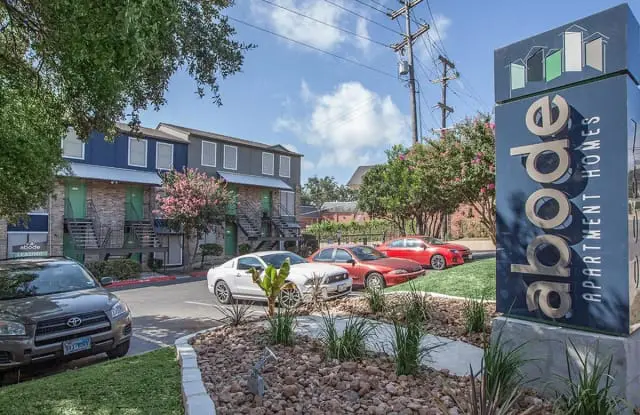Economies of scale, or more often the lack thereof, are an often overlooked element when assessing multifamily real estate investments.
Regardless of if you are a brand new investment sponsor looking to do their first deal, or a seasoned professional, you likely intrinsically have a clue that the concept economies of scale is important, but not necessarily why. Therefore, the goal of this article is go to over the potential benefits and pitfalls that come along with properties of a given size, and how it amplifies (or dampens) returns.
Leaving the Relatives
It’s easy to get too trapped in “relative mindset” when thinking in the realm of real estate. After all, whether through experience or schooling, the concept of “relative” is ingrained in us as we trained to become investment professionals.
Returns, particularly cash on cash or IRR, are relative metrics. Is an 18% IRR over 5 years good? Bad? It’s completely relative to what other assets with comparable risk profiles are achieving. Is a 6% going-in cap rate in Nashville good? Bad? Also, completely relative to what comps are going for in the area, and how recently.
The list goes on. I would go so far as to say that most items when contemplating anything multifamily or commercial real estate is probably a relative consideration. But economies of scale specifically bucks that trend.
Scale Is An Absolute
Where most things are relative, scale is moreso an “absolute” consideration. After all, 300 units is 300 units is 300 units. That fact, and the items it affects, doesn’t change much when compared to other deals with different unit counts. It’s not good or bad necessarily, it just is. And it’s unique, as the absolute scale of your property has affects on all the other relative measures we just talked about. This is how economies of scale come into play on your deals.
Let’s use one of the most run-into examples: property management fees.
Let’s say we have two hypothetical properties we’re considering buying, a 50-unit deal and a 500-unit deal. In this scenario, both deals are exactly the same in every conceivable way except for unit count; same neighborhood, same price per unit, same everything. The 50 unit deal has an annual Total Income of $100,000 and the 500-unit deal’s is $1,000,000, or exactly 10 times bigger.
If economies of scale didn’t exist, these deals would be identical truly in every respect. Sure the 50-unit deal makes 10x less income than the 500-unit deal, but you also paid 10x less for it. Profit, at the end of the day, would be relatively the same.

But in real life, this isn’t the case. Why? Because of economies of scale, and in particular with this example, property management fees. In describing above, we assumed that expenses at both properties were also the same (relatively). But in real life, a property manager would never charge the same % fee for managing the 50-unit deal as the 500-unit. Likely, the 500-unit deal would be able to negotiate close to a 3% fee to the management company, while the 50-unit would likely have to go at least 4%+.
The reason for the discrepancy in price is simple – property management companies appreciate economies of scale, and consider that in their pricing. They know that with a 3% of $1,000,000 = $30,000 a year, while 3% of $100,000 is only $3000, 10 times less. This would be fine in an ideal scenario where the 50-unit deal was 10 times less work to manage, but that is absolutely never the case in real life.
Due to human limitations, a larger property will always be relatively easier to manage for the money. Each property requires the same monthly reports, the same minimum amount of phone calls with the owners, the same amount of lender compliance. And therefore, the $30,000 is much more worth their time than the $3000. Of course, management companies still have 50-unit deals in their portfolio, but that’s why they’re charged 4% fees instead of 3%.
Economies is Plural For A Reason
Hopefully the above helped you frame the “why” behind economies of scale. And while I used a property-level example, it’s important to remember that there are many other economies of scale that exist at both the property and ownership level. Each investment (assuming you have investors outside just yourself) requires a certain amount of oversight, investor relations, and compliance from the owners’ perspectives as well, and these items are all cost a lot of time and resources.
To end off, I figure it may be useful to give a few more examples where economies of scale often crop up. Bigger properties (the threshold in my mind is typically 200 units+) typically see benefits in:
- Management Fees
- Sale Price Per Door
- Legal Costs and Local Compliance
- Advertising Costs
- Per property advertising typically costs the same regardless of unit count
- Interior Renovation Costs
- Cabinets, countertops, and so on can often benefit from buying in bulk (advantage 1) and buying in advance (larger properties are more likely to have storage space, advantage 2)
- And more
Please note by no means is this article meant to scare off sponsors from looking at sub-100 unit deals, as they can absolutely be good investments. The goal of this is simply to better inform why buying on a bigger scale can pay dividends, and potentially explain why so many smaller sponsors often decide to team up to take down bigger deals.
In summary, economies of scale can help elevate bigger deals passively, by gaining monetary benefits due to their size alone, and this factor should absolutely be considered when comparing investments.





